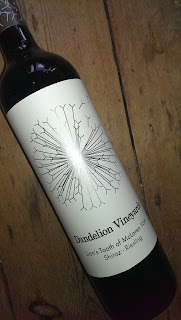The organic compost they use, is made from waste produced in the winery, straw and organic cow manure. They are meticulous at managing the canopy and the number of bunches on each vine to ensure optimum fruit quality. Irrigation is used towards the end of the summer, but soil moisture levels are monitored carefully, with water only being applied when required to maintain the water levels in the soil. By employing all of these techniques, they really do produce some of the best fruit for their winemaker Blair Walter to use and produce his stunning wines with.
Within the winery Blair also employs a hands off approach to winemaking, allowing the wild yeasts in the winery to start the fermentation process, malolactic fermentation is also allowed to take place naturally. He even avoids fining or any filtration, to help preserve the wine's expression of each 'terroir'.
The Calvert vineyard site is located one kilometre to the east of the Elms site with north facing slopes, and has the soil type that first led the guys to this part of the region, deep silt loams. The vineyard was first planted in 1999 with several different Pinot Noir clones, with Chardonnay and Riesling being planted 2003.
 The 2011 Calvert Pinot Noir, I have to say was absolutely stunning, I managed to find a bottle a little while ago on the shelf in a local wine merchants and I just couldn't resist. In the glass it had bright ruby colour, with wonderfully rich aromas of red berry fruit, leather and spice. These all came together in the glass with such great complexity and depth, the oak was perfectly integrated and balanced with the fruit, it had a wonderful acidity, soft/silky tannins and a length of flavour that just kept going on and on.
The 2011 Calvert Pinot Noir, I have to say was absolutely stunning, I managed to find a bottle a little while ago on the shelf in a local wine merchants and I just couldn't resist. In the glass it had bright ruby colour, with wonderfully rich aromas of red berry fruit, leather and spice. These all came together in the glass with such great complexity and depth, the oak was perfectly integrated and balanced with the fruit, it had a wonderful acidity, soft/silky tannins and a length of flavour that just kept going on and on.Would I recommend this wine, absolutely, actually I would go as far as saying that I would recommend any wines from Felton Road, they have a fantastic depth of flavour and complexity that is hard to find in wines from the new world while still keeping its identity of a New World wine.










